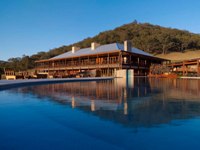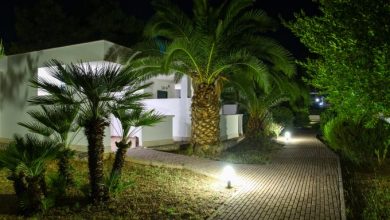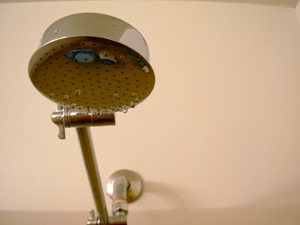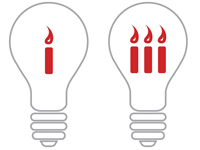Beware of the Dark – not all LEDs are Built for Performance
When making the all-important departure from power hungry halogen lights, it is important to make sure you don’t sacrifice quality for efficiency and purchase under-performing replacements.
The most effective way to achieve lighting efficiency is to replace costly halogens with LED bulbs, a technology that is quickly becoming the new frontier with its unrivalled levels of energy efficiency. However, being a burgeoning market, many lighting manufacturers have tried to cash in by quickly producing LED lights without much regard for quality, resulting in a clouded market place full of sub-par products.
With LED lighting having the ability to cut electricity bills by 80% and maintain low running costs for over 20 years, they are a true investment and it is important to ensure that you install lights of the highest quality. If you are going to invest in lighting that will give decades of use, it is paramount that you purchase a product that will perform optimally over that time.
To ensure that you make the right decision when purchasing LED lights, I have highlighted a number of important areas that will help you separate the wheat from the chaff and allow you to make a sound investment.
Low power usage – LED lighting is the most energy efficient lighting type available and gives the opportunity to turn lighting from one of the most costly expenses to one of the cheapest. Keeping that in mind it, it is worth seeking a light that is seriously frugal with its use of electricity. While halogens suck up 50 watts, top range LEDs need only 10 watts to achieve the same levels of brightness.
Unfortunately, some LEDs are not designed to be as efficient as possible and use more power than those from top manufacturers. Having the goal of cutting electricity bills to a fifth is an easy way to avoid LEDs that aren’t up to scratch and achieve energy efficiency.
High light output – While brightness is one of the most noticeable points of comparison between different lights, it is surprising how many LED bulbs leave a lot to be desired in this area. Halogen bulbs are officially rated by the Department of Climate Change and Energy Efficiency to have an output of 720 lumens, therefore an easy way make sure you don’t lose any light is purchase a bulb with the same output.
While 720 lumens is the benchmark that all LEDs should achieve, some retrofit bulbs achieve only a little over half that with around 380 lumens. Top range bulbs do match halogens with 720 lumens though, so ensure you note that.
Long warranty – One of the easiest ways to spot a light that stands out from the masses is to find a bulb that is backed up with a lengthy, unconditional warranty. Manufacturers that are willing to back up their products with a warranty are much more likely to have produced something that is trustworthy and wont fail.
Look for a warranty of three or more years to ensure that you are selecting a quality light that won’t fail or cause hassles.
Superior light quality – Colour rendering index is measurement of the quality of light that is put out by a bulb. Rated out of 100, CRI determines how vibrant and true colours appear and enhances a room’s look and feel. Leading LEDs have a CRI of 90, which ensures rooms appear exactly as they are intended and are always inviting. It is particularly important to avoid lights with a low CRI, as rooms will appear dull and colours washed out, which is not going to appeal to guests.
Long lifetime – LED lights have the ability to put an end to the constant hassle of replacing a blown halogen, only to have another one die just after the ladder has been put away. With the ability to last for 70,000 hours, LEDs can be left on in foyers and rooms for long periods of time without the chance of blowing out and leaving dark spots.
This is not standard however, and some LEDs will only burn for around half that. To fully embrace LED technology and enjoy all the benefits of lights that can be installed then forgotten about, look for an LED that will reach 70,000 hours.
Keeping these pointers in mind will keep you away from inferior LED lighting products that will let you down and prove to be costly, and steer you towards the most efficient that will achieve long-term savings.
Alexander Miller
Brightgreen

AccomNews is not affiliated with any government agency, body or political party. We are an independently owned, family-operated magazine.




